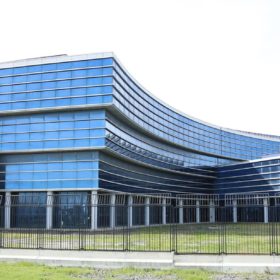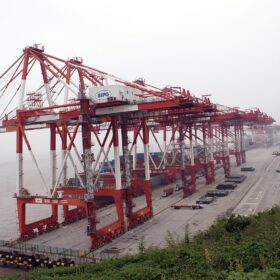3Sun earns TÜV Rheinland certification, clearing way for PV module sales
Italian heterojunction module manufacturer 3Sun says it started production at its factory in Catania, Italy, in September.
BIPV likely linked to recent fire at Brussels’ first net-zero building
A fire broke out at Brussels’ first net-zero energy structure, the Treurenberg building, in late October. The blaze, likely caused by building-integrated photovoltaic (BIPV) panels on the facade, led to an evacuation, with no injuries reported.
DAS Solar to build 3 GW solar module factory in France
Chinese manufacturer DAS Solar says it will open a €109 million ($115.3 million) panel production plant in Mandeure, France, by 2025.
Unlocking the potential of radiative cooling for photovoltaic modules
Radiative cooling is an emerging technology that holds the potential to enhance the performance and longevity of PV modules. Researchers from the Institute of Nanotechnology of Lyon explain how this technology may reach commercial maturity.
Open-source tool to eliminate redundant engineering costs in rooftop PV deployment
Researchers in Canada have developed an open-access online tool that reportedly helps homeowners achieve considerable savings in deploying rooftop PV systems. The tool is claimed to offer accurate structural engineering calculations while ensuring compliance with building codes.
China cuts export tax rebate for solar products
China has reduced the export tax rebate for solar products, lowering refunded taxes for Chinese PV exporters and eating into their profit margins. The move might force some companies to increase export prices to mitigate potential financial losses.
Thornova Solar starts solar module production in Indonesia
Thornova Solar has started producing solar modules in Indonesia. The company says the move is in line with changing US market regulations. It plans to supply customers with modules from Indonesia or the United States by mid-2025.
France publishes new provisions making solar mandatory on parking areas
France has enacted provisions mandating solar installations on parking areas, detailing calculation methods, exemptions, and fines for non-compliance.
Longi unveils heterojunction BC solar cells with 27.3% efficiency
The Chinese manufacturer said the device is based on dense passivating contacts that reduce parasitic light absorption and improve passivation. It used a streamlined manufacturing technique that is reportedly about one-third more effective than TOPCon mainstream technology.
Solar LED streetlight with integrated PV panels, battery
Taiwan-based electronics manufacturer Para Light Electronic has launched a compact solar LED streetlight with integrated PV panels and battery to provide up to 15 hours of area-lighting for pedestrian walkways and roads.










